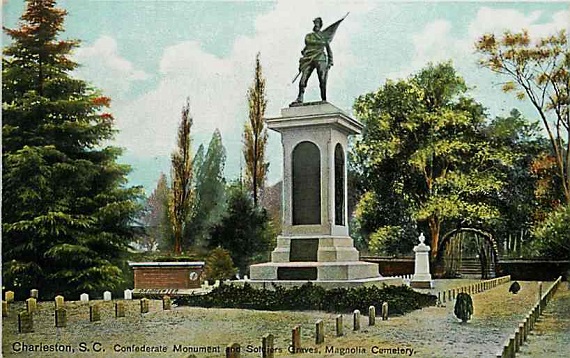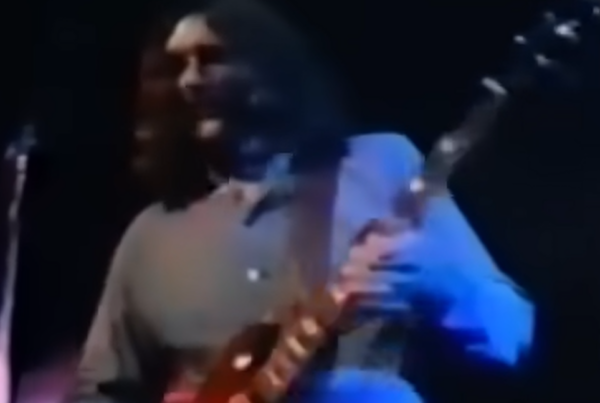
Today there is a frenzied effort to tear down memorials to the Confederate dead. If you think “frenzied” is too strong a word, take a look at video of the crowds in Durham and Chapel Hill, North Carolina, who resembled (ironically) a lynch mob as they threw ropes around a metal soldier and dragged it to the ground, all the while kicking and shouting profanities at the fallen memorial, and taking pictures with their trophy. It’s as fine an example of mob mentality as you will find and does not paint those who committed the act of vandalism in a flattering light. Such lawless and vulgar behavior suggests that they do not have the moral high ground they claim to occupy.
These Confederate monuments need to be removed from the landscape, it is said, because the majority were installed at the “height of the Jim Crow era” and exist only to intimidate the South’s black population. It is said that they have nothing to do with history, despite many standing silently for over a century. Their meaning is to spread “Lost Cause” propaganda, and they are a reminder of racism, nothing more. This line of thinking is an example of the narcissism of our present age, where someone can look at a memorial to a fallen soldier or family member and think it’s not about the soldier but about them or their pet cause, rather than what the memorial actually meant when installed. And many modern journalists and activists are not above some selective dishonesty to reinforce these beliefs, as the cherry-picked Julian Carr quote from the Silent Sam dedication illustrates. Out of the many speakers and the thousands of words spoken on that memorial’s dedication day, the few paragraphs by Carr that deal with race are the only words the press quote repeatedly. The context, the themes of duty and sacrifice, and the fact that none of the other speakers touched on racial issues, means nothing to the activist, bent on cleansing the landscape of these sinful artifacts.
The reality is that most Confederate monuments are gravestones, erected to give closure to grieving families who did not even have the solace of a victorious cause to comfort them. A son or father or brother went off to war and never came home, and the manner of his death or place where the body fell was often unknown. The sheer number of memorials all across the South is a testament to just how many died in that war and the lingering trauma of the loss; a tangible reminder of the very real human cost of the South’s attempt to form an independent nation. And for the vast majority of monuments, there is a paper trail that will demonstrate the truth, if one is willing to go and look for it.
The Ladies Memorial Association of Charleston was formed to care for Confederates buried in Magnolia Cemetery, and to erect “a suitable Monument to their memory.” To that end, the ladies wrote to the various churches around Charleston and published notices in the newspapers looking for information on the dead, which was compiled and printed. This was an expensive undertaking, as was marking the graves of the Confederate dead. The remains of some men who had been killed during the battle of Gettysburg were removed from Pennsylvania and re-interred in Charleston. Having done all this to identify and honor individuals, it was felt that a monument to all who died should be placed in the cemetery.
The Monument has been appropriately placed in the midst of the graves of those whose death it commemorates. It is plain and unostentatious, but neat and appropriate. As it is a memorial of a lost cause, it should not be a triumphal memorial. Placed in the City of the Dead. and near the entrance, the sight of it cannot fail to call back the memory of the sad history which it commemorates. A splendid monument in the city would be only an ornament to be gazed on with listless and indifferent eyes; and, instead of being a memorial of the dead, would be only the object of cold, art criticism.
Its proper place, therefore, is just where it is, in the midst of the silent slumberers, whose deeds, and whose failures, it is designed to keep alive in the memories of the people.1
Of interest here is how the money to pay for this was raised. The State made a small donation, but the majority was privately raised from “subscriptions and donations”, interest on city stock, interest on deposits and loans, and from various raffles and sales. This memorial was not, for the most part, a government-funded project, though some marble originally meant for constructing the State House was donated to the project. The marking of graves, the re-burial of the war dead and the commissioning and construction of the monument was paid for mainly with private funds from many sources.
An equestrian monument of General P. G. T. Beauregard stood in New Orleans until it was removed in May of 2017. In his speech at the unveiling of this monument, dated November 11, 1915, Secretary of the Beauregard Monument Association A. B. Booth noted that the work had begun 22 years earlier when Beauregard himself had died. A committee was formed, subscriptions solicited, and the fund raising begun. Many of those involved at the beginning did not even live to see the work completed and the statue unveiled. They started it, while others had to carry it to completion. The statue, wrote Booth:
…is not to stand as an advocate of war, but to honor duty and true patriotism and worth, such as has distinguished Gen . G. T. Beauregard, whose memory we honor. 2
The Confederate memorial in Arlington National Cemetery was placed there in the spirit of reconciliation and national unity. President Taft himself welcomed the United Daughters of the Confederacy to Washington DC.
If the occasion which brings you here were the mourning at the bier of a lost cause, I know that the nice sense of propriety of a fine old social school would have prevented you from inviting me, as the President of the United States to be present. You are not here to mourn or support a cause. You are here to celebrate, and justly to celebrate, the heroism, the courage and the sacrifice to the uttermost of your fathers and your brothers and your mothers and your sisters, and of all your kin, in a cause which they believed in their hearts to be right, and for which they were willing to lay down their lives. 3
The Ladies’ Memorial Association of Raleigh was formed, like the one in Charleston, to care for the bodies of the local Confederate dead, and they too recovered some fallen from Gettysburg and from Arlington and brought them back to be buried in North Carolina. Mrs. Garland Jones, one of the Presidents of the Ladies’ Memorial Association, expressed the following wish in 1893, which also expresses their motivation to memorialize:
It is the hope and prayer of the older members of the Ladies’ Memorial Association that the work be not allowed to die with the passing away of its founders, and the generation which knew the birth of the “Storm-beaten” nation. and which mourn its fall, and whose hearts cherish the fadeless glories of the Confederate flag ; but that the younger women, to whom these glories are only a tradition, will keep alive the memory of the men who died for our just cause, but who died not in vain, for they gave their lives for a great principle, and their blood sends a message down through all time. 4
Mrs. Jones wishes the tradition of remembering the fallen to be one that continued beyond her generation, to go beyond the lives of those who began it. And is that not the purpose of any monument, to create a lasting physical representation of someone or something that will last, and which will speak to future generations?
That was the goal of the women of the South Carolina Monument Association, and in organizing to commission and build a monument in South Carolina, they wrote down a constitution for the undertaking as well as speaking about it. The association’s goal was “the building of a monument, in the City of Columbia, by the women of the State, to the memory of the South Carolinians who fell in the service of the Confederate States.”
One duty still remained – they must now guard the precious dust of the martyred dead of their State, and erect a monument which should perpetuate the memory of the slain and convey to the latest generations the record of the undying fidelity of the people of South Carolina to truth, justice, and liberty. 5
“Guard the precious dust of the martyred dead”… “keep alive the memory of the men who died for our just cause”…. “here to celebrate, and justly to celebrate, the heroism, the courage and the sacrifice to the uttermost of your fathers and your brothers and your mothers and your sisters, and of all your kin, in a cause which they believed in their hearts to be right”… the sentiments are clear, and they are hardly racial in nature. The goal is to honor and to keep alive the memory of the fallen dead, and to offer closure to families who were never able to bury their dead. The reader is encouraged to read the full sources and draw your own conclusions, but it is no surprise that we are not being told the full truth about why these monuments were placed all over the South. The motive for erecting them, as demonstrated in these few examples, was not hate for the black man, but love for lost family and fellow Southerners.
Given that there are hundreds of monuments, there are plenty more examples that could be shared, and they should be. Anyone interested in defending the presence of these Confederate memorials should search for and share what those who are responsible for their existence actually had to say. As General Robert E. Lee would tell us, “Everyone should do all in his power to collect and disseminate the truth, in the hope that it may find a place in history and descend to posterity.” Truth is always worth defending.
1. “A Brief History of the Ladies’ Memorial Association of Charleston, S. C., From its Organization in 1865 to April 1, 1880, together with a roster of the Confederate Dead.” published by H. P. Cooke & Co., Printers, 52 Broad Street. 1880
2. Unveiling program for the Beauregard Monument Association’s dedication of the P. G. T. Beauregard equestrian statue in New Orleans, 1915
3. “History of the Arlington Confederate Monument” by Hilary A. Herbert, chairman of the Executive Committee of the Arlington Confederate Monument Association, 1914
4. History of the Wake County Ladies Memorial Association – Confederate Memorials in Capitol Square, Memorial Pavilion, the House of Memory and the Confederate Cemetery, 1938
5. The South Carolina Monument Association, Origin, History and Work – The News and Courier Book Presses – 1879






